Extended Breeding Guide
Continued from Breeding
Contents
[hide]TL;DR and FAQ[edit]
- How do I breed monsters?
- The barn west of your house on the Farm. The monsters you want to breed go in the two boxes at the bottom of the menu. You will need to play through the story a bit to unlock breeding.
- How do I know what offspring I’m getting?
- Without using custom genes, it will be the Species of the parent in the first box, and the Type of the one in the second.
- What moves will my bred monsters have/learn?
- Bred monsters know the moves that their parents know. They inherit all the moves they can from the primary parent first, then the secondary, until they have six moves. This means that if the primary parent has six moves, their offspring will always have those six moves. Offspring combine their parents’ level-up learnlists, but right now this does not function properly for many monsters.
- What does the crown icon mean on the party screen?
- It’s the generation of the monster. A gold crown with no number means that the monster is of 5th or further generation.
- What happens when you breed a Brilliant (rainbow) Monster?
- It passes on a random palette from any monster in the game. You can use it to breed another Brilliant, but it’s the same odds as using a non-brilliant (1/1000).
- How do I make Custom Genes?
- The gene lab; currently you get to it by talking to the Hooper Sister at the end of the path east from Frobec. Remember that if you save a gene to the first slot, it will overwrite the default breeding gene.
- What do the icons on the Custom Gene terminals mean?
- HP, Attack, Magic, Speed, Resistance, Defense, Species, Palette, Type, Growth Rate. The little purple one is for saving genes.
- How do I use Custom Genes?
- Select “Set Gene” from the breeding menu and hit the left and right arrow keys to cycle through. Remember that genes don’t “un-set,” so if you want to go back to normal breeding, you have to soft reset.
- How do I get a monster with a different type than its form?
- Set the monster whose Species and Type you want as the primary, and the Type of the Form you want as the secondary. Then set the primary monster to pass on type and species.
- I want to increase an existing monster’s stats! Do I need to rebreed it?
- Nope! Visit Appenton and head a little bit north of town to find a house where you can perform Isotope Therapy. This will allow you to increase the base stats of a monster without having to breed the stats onto a new offspring! You can read more about it below.
Net Stats vs. Base Stats[edit]
An important thing to remember when breeding is that monsters pass down their Base Stats, not their Total (or Net) Stats. You can view a monster’s Base Stats by pressing Tab on their status screen.
A monster’s base stats are multiplied by their Growth Rate to determine how many stat points they gain each level. The result of that multiplication is shown as the monster’s Total Stat.
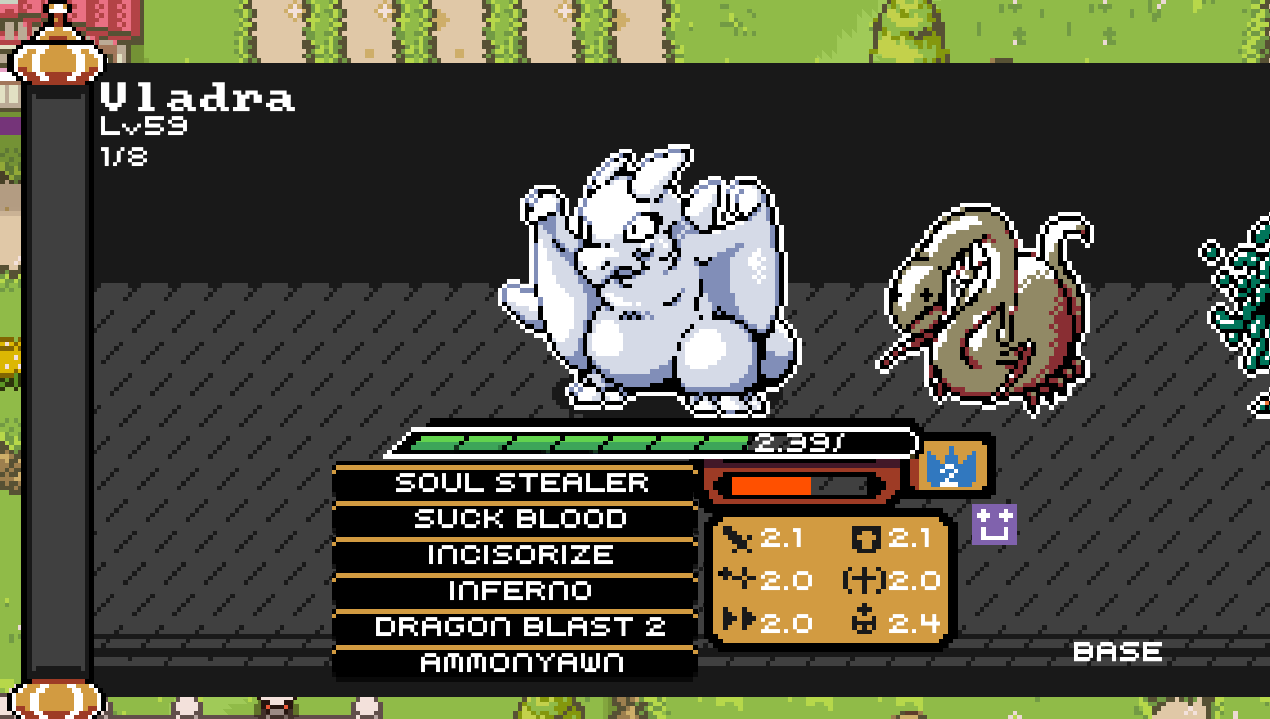
Species, Form, and Type[edit]
Although Monster Crown has hundreds of possible monster appearances that could result from any given breeding, there is a quick and easy way to be able to predict exactly what your offspring will look like. Taking a quick glance at the in-game Notebook, you will notice that each monster entry has a series of tabs in the bottom right corner.
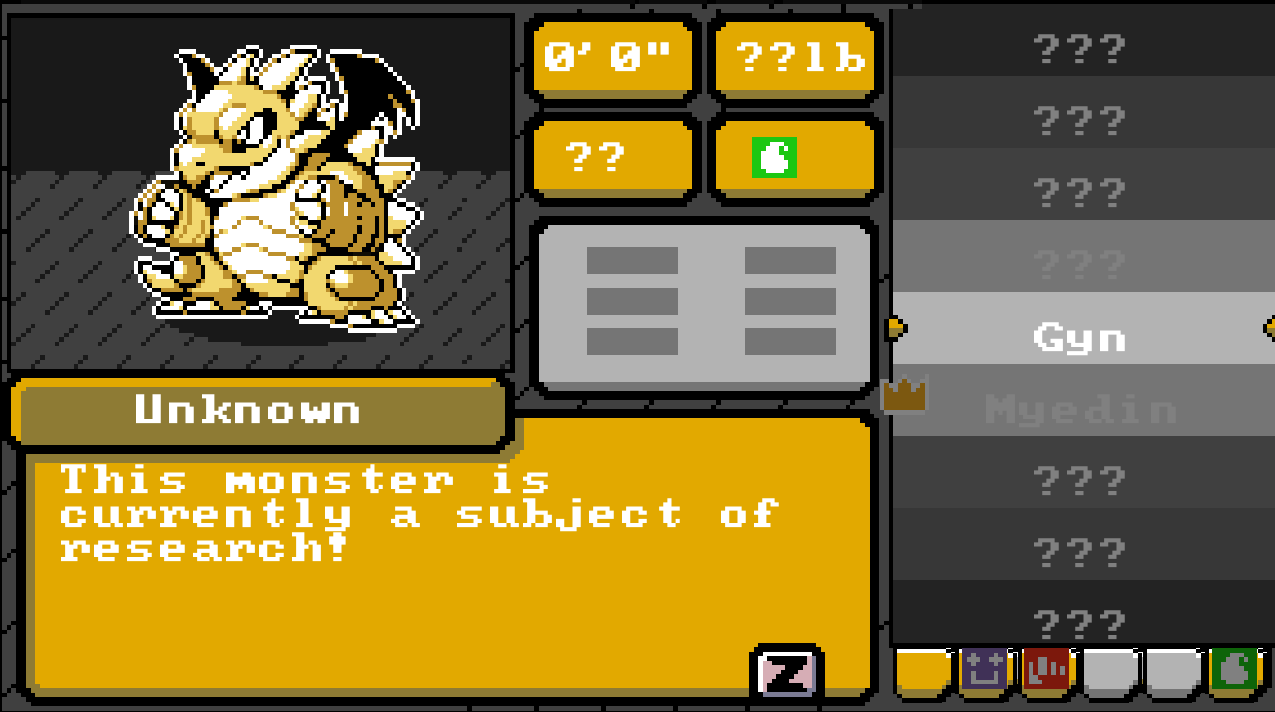
The blank tab represents the monster’s Base Form, or what it would look like when encountered naturally in the wild. The other tabs depicting the icon of each monster type is the monster’s Hybrid Form, or what the offspring would look like if that monster is set to pass on its species and bred with a monster of the tab’s indicated type. All of the tabs are grouped by the monster’s Species, which are the names you see on the list. In the example above, a Base Form Gyn is shown. It should be noted that when breeding two monsters of the same Species together, the offspring will always have the Base Form. The Notebook is also useful in that the greyed-out tabs indicate forms you haven’t seen yet, allowing you to pinpoint what you may want to try breeding next. Species whose full suite of forms you’ve seen will be marked with a gold crown.
The Gene Lab allows you to choose which parent passes on their Species and Type, however the Secondary parent’s Type will always determine which of the parent’s Hybrid Forms you receive. This allows you to mix and match Types and Forms with careful enough breeding. Let’s look at an example:
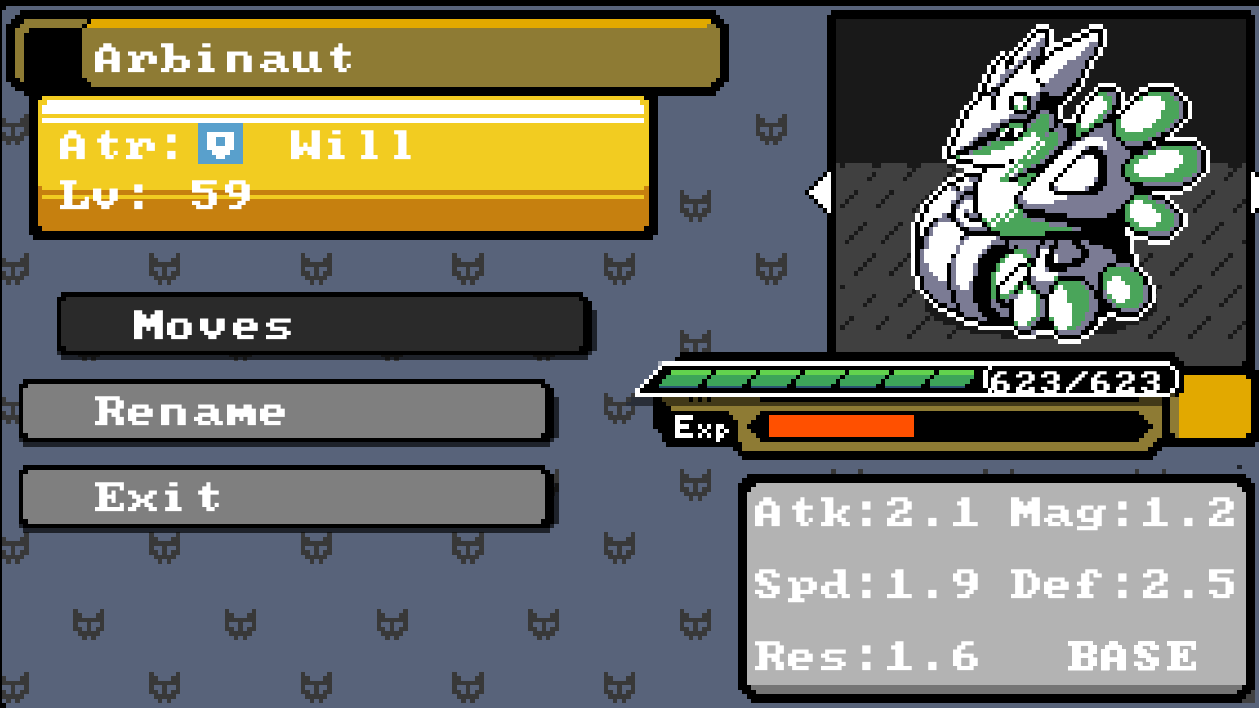
This monster is a Brute Form Nautlus, however it has Will type. It was made by breeding a Will-Type Nautlus as the Primary parent and a Brute-Type monster as the Secondary parent, while using a custom gene to inherit Type from the Nautlus.
Isotope Therapy[edit]
Although not exclusively a feature of breeding, Isotope Therapy is a good way to increase your available resources when it comes to breeding monsters with desirable base stats. While training your existing monsters or pacting with wild ones, you may have noticed that they will occasionally have or gain a small green star above their HP bar.

This star means that the monster is eligible to be treated with Isotope Therapy. The purpose of Isotope Therapy is to boost the stats of monsters who may have started to struggle against the stronger monsters you encounter at higher Tamer Levels, particularly wild-pacted monsters vs. monsters you’ve spent time transforming or breeding. This helps in many ways beyond just the individual monster; by using Isotope Therapy on every eligible monster you pact with, you increase the pool of high stats you have to work with. In order to get started treating monsters with Isotope Therapy, head north of Appenton and visit the house pictured below. The man inside will give you a small quest, after which he’ll grant you use of the feature. You have to speak to him each time you want to use Isotope Therapy on a monster, so get ready to make Appenton one of your travel hotspots.
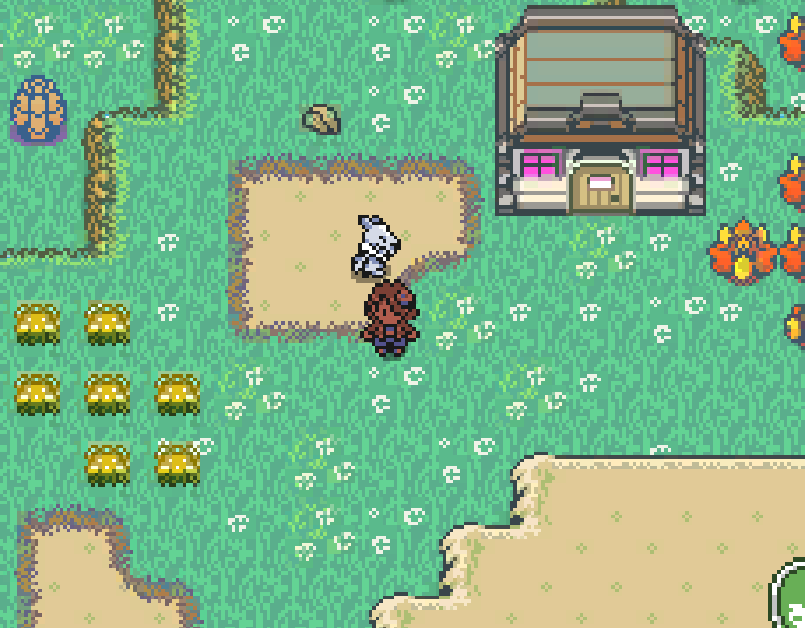
Isotope Therapy also works on monsters that you’ve bred, meaning that you can breed monsters that qualify as soon as they’re born. Even if you breed a monster that doesn’t immediately qualify for Isotope Therapy, gaining Tamer Levels may cause it to qualify later down the line. In this way, you never have to abandon a monster due to its stats unless you want to completely change their distribution. Isotope Therapy does scale, however, so monsters with lower base stats will gain far more than monsters who are already relatively strong.
Crowns and Generations[edit]
When looking at your monsters in the party menu, you might have noticed that they have a little crown icon next to their health bar.

The number on the crown indicates the Generation of a monster, and serves as an estimate of the number of cross-breedings it took to get that monster. A gold crown with a white outline indicates that a monster is of the 5th generation or beyond. Like real genealogy, the Generation of a monster is not perfectly linear. Breeding two 1st generation monsters will produce a 2nd generation monster, but so would breeding a 1st generation monster with a 3rd generation. Think of it as a measure of how close your monster is to being “purebred.” Generation favors the Primary parent, so if you are trying to breed a low-generation monster from higher-generation parents, be sure to have the lower of the parents be the Primary.
Transformations and Breeding[edit]
Monsters that have been permanently transformed using their corresponding items interact with breeding in different ways depending on their species and in-game lore. Some can only produce their transformed Hybrid Forms through breeding, while others breed the original Base or Hybrid Form that the monster would have before transformation (and must therefore have another transformation item used on the offspring). Transformed monsters can pass on their new suite of base stats, often allowing you to put unusually high numbers on monsters incapable of transforming.
Currently, transformations work according to this table:
| Produce Untransformed Hybrids that Can’t be Transformed | Produce Untransformed Hybrids that Can be Transformed | Must be Bred For Transformed Hybrids |
|---|---|---|
| Dracoyle, Walerus, Cobreo | Apo, Gorgem, Jungro, Ambigu | Laz*, Darwhol, Epheal, Ix, Igrawn**, Domigon, Madis, Chuk |
- You can try using a Super Gro on an untransformed Laz Hybrid. You will regret it. You monster.
- Igrawn FE’s hybrids look almost identical to their untransformed hybrids. There are differences though!
Tips and Tricks[edit]
Top-Tier Breeding[edit]
If you’re the sort who wants to make the godliest monsters with the highest stats available in the game, you’re going to need to pick and choose from a handful of the highest Base Stat numbers. These are as follows, and will be updated as the game progresses.
- Attack
- Defense
- Magic
- Resistance
- Speed
- Hit Points
- Growth Rate
Also important are the moves your monster knows. Monsters using a move that corresponds to their type grants them a Same-Type Attack Bonus (STAB) damage multiplier of 1.5x, however you might also want your monster to be able to use moves that are effective against the type your monster is weak to (such as a Malicious monster having a Will-type move). Some decent moves to consider are:
| Brute | Malicious | Unstable | Relentless | Will |
|---|---|---|---|---|
| Dragon Tackle, Heavy Stagger, Trauma Fist | Black Magic, Cruel Horn, Suck Blood, Blood Gluttony | Skull Spell, Rot Burst, Soul Stealer, Inferno, Ruby Beam, Vitality, Replenish | Full Slash, Rock Collide, Titan Tectonic, Stampede, Bedrock Focus | Flora Beam, Cera Strike, Absolute Palm, Absolute Fist |
Laz Spore Trick[edit]
Remember how I said you’re a monster if you decide to use a Super Gro on a Laz hybrid? Well, with Isotope Therapy, you can turn the pathetic little creature that results from your tyranny into a catalyst for breeding some of the strongest monsters on Crown Island. On its own, a Spore has 0 in every stat except HP, where it boasts an equally pathetic 0.01. It knows whatever moves the Laz hybrid it came from knows, though that’s largely unimportant for what you’ll be using it for.
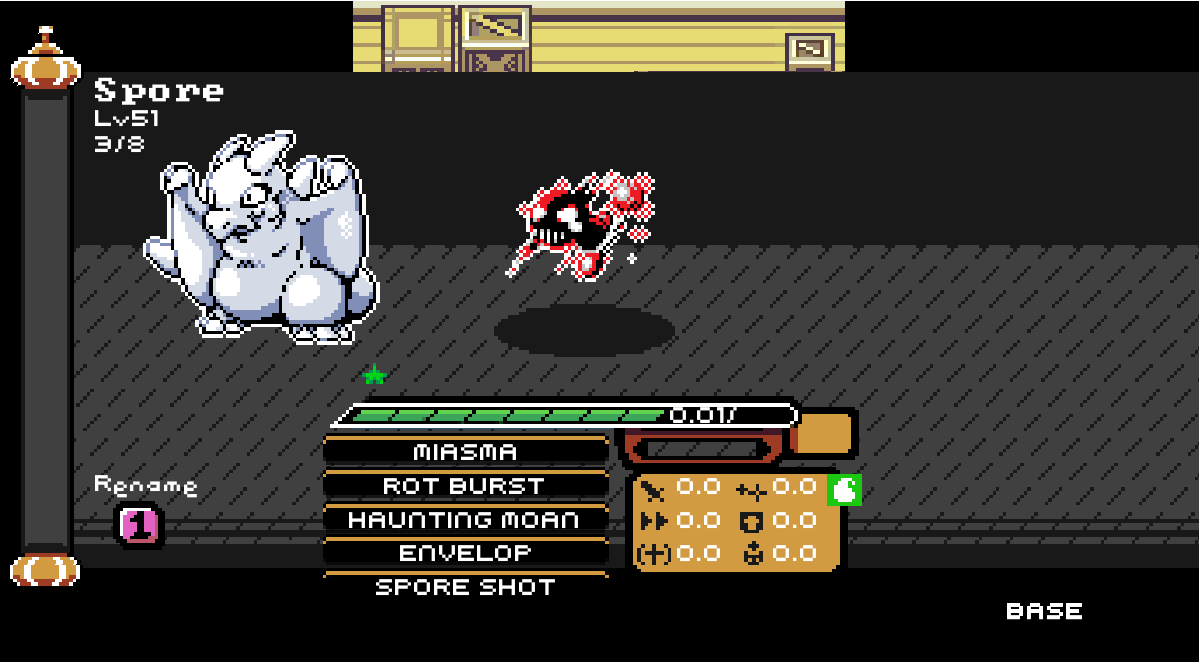
The keys to turning this little spectre into your primary godslayer production machine are the Gene Lab and Isotope Therapy. First, sort through your boxes and find your monsters with the highest base in each stat. Take these guys to Isotope Therapy if they’re eligible, to make sure that you’re getting the highest numbers you possibly can. Then, using the Gene Lab, breed them with a Spore such that their offspring only inherits the one highest stat from those monsters, minus Growth Rate. This means you should end up with 6 Spores with 0s in every stat except one. Take these six Spores to Isotope Therapy, and watch as the algorithm decides the best course of action is to skyrocket the one stat that actually exists on each Spore. This should get you roughly in the double-digits, somewhere around 10.
After that’s done, it’s simply a matter of breeding the Spores with each other to pass on their high stats until you have one offspring with all six stats at a high number. Remember, Growth Rate will always be a number between 0.9 and 1.3, and isn’t affected by Isotope Therapy, so if you want your catalyst Spore to pass on a decent Growth Rate, you’ll have to breed it with another monster for that stat before you’re ready to begin breeding the monsters you actually plan to use.
Efficiency Breeding[edit]
If you’re breeding monsters with the intent to keep your Generation as low as possible, you’re going to need to take several things into account. Following these steps should get you a 2nd-4th gen monster with ease.
- Pick the Species of the offspring you want. Choose a first generation monster of that species. Wild Hybrids as well as hybrids gained from Wild Eggs and NPC trades count as first generation, so try to get as many of these as you can.
- Make a list of the moves you want your offspring to be born with, and what monsters learn these moves. The fewer monsters you have on this list the better, so try to get monsters that learn multiple moves you want to inherit. You want to have no more than three or four monsters on this list if none of them are the Species or Type you want. Keep in mind that if your Species monster does not learn any moves you want, you’ll have to settle for one of the moves in its movelist and five desired moves as opposed to the full six, due to how inheritance works.
- Take all the monsters you chose above to the move relearner. Uncheck all the moves that aren’t the ones you want inherited, leaving them with only the desired moves in their movelist. While you’re there, also preen out any moves you don’t want on the monster of your desired Species. Don’t worry, you can always put the missing moves back later.
- Take note of all the stats of the monsters you have collected above. You will likely need to create a custom gene for each breeding to make sure that each monster passes on its highest stats. If you don’t want to use up all your saved gene slots, this may take a lot of back-and-forth to the gene lab.
- Choose the Palette you want for your monster. If the palette you want (or the Brilliant you want to breed with) does not come from a monster on your list above, take the Palette monster and breed it with your Species monster so that you have a 2nd-generation monster of the Species and Palette you want. Be sure to remember to take this offspring to the move relearner to reduce its movelist to the move(s) you want. If the palette you want is on one of the monsters from your list, skip this step.
- Begin breeding your movelist monsters together, making sure you use custom genes between each breeding to pass down the highest stats. Make sure you breed the monster whose Type (and/or Palette, if it was one of your movelist monsters) you want inherited last.
- Breed the Species monster as the Primary parent with the offspring of the Step 6 breeding, using a custom gene to inherit all of the highest stats. This should result in your completed monster!
Note: If you have no choice but to breed using a 4th generation monster or monster with a gold crown, you can “breed back” generations by breeding the monster with a 1st generation as the Primary parent and making a custom gene set to inherit everything from the Secondary parent. This will allow you to essentially copy the monster, but it will be 2nd generation.
Overworld Sprite Swapping[edit]
Ever feel like a monster’s Hybrid Form would feel so much better if it had a different overworld sprite? Let’s take Unstable Form Gyn for example. Below is its battle sprite, next to Gyn’s default overworld sprite.
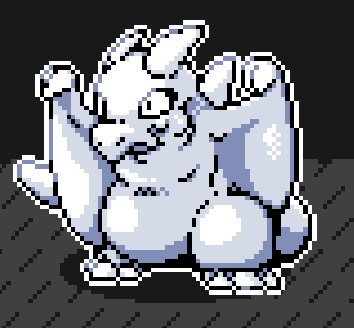
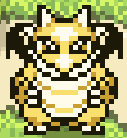
Doesn’t quite have the same look since the wings are attached to the body, does it? Fortunately, there’s another Base Form monster that has wings that are attached to its body: Romninoct. This is that Gyn Hybrid’s overworld sprite:

The only way to swap out a monster’s overworld sprite is to breed it using the Alternate Gene. This gene is unlocked by pressing F7 in the overworld once you have breeding unlocked, and occupies slot 2 of your saved genes slot.

As you can see, it also changes how other traits are inherited, but the important thing is that the Species now comes from the Secondary parent. Thus, offspring of monsters produced with the Alternate gene will have the battle sprite of the Secondary parent’s Species, but the overworld sprite of the Primary Parent. Note that this does not work with transformed monsters; their overworld sprites are locked to their own Species, and transforming a sprite-swapped monster will return its sprite to the correct Species.